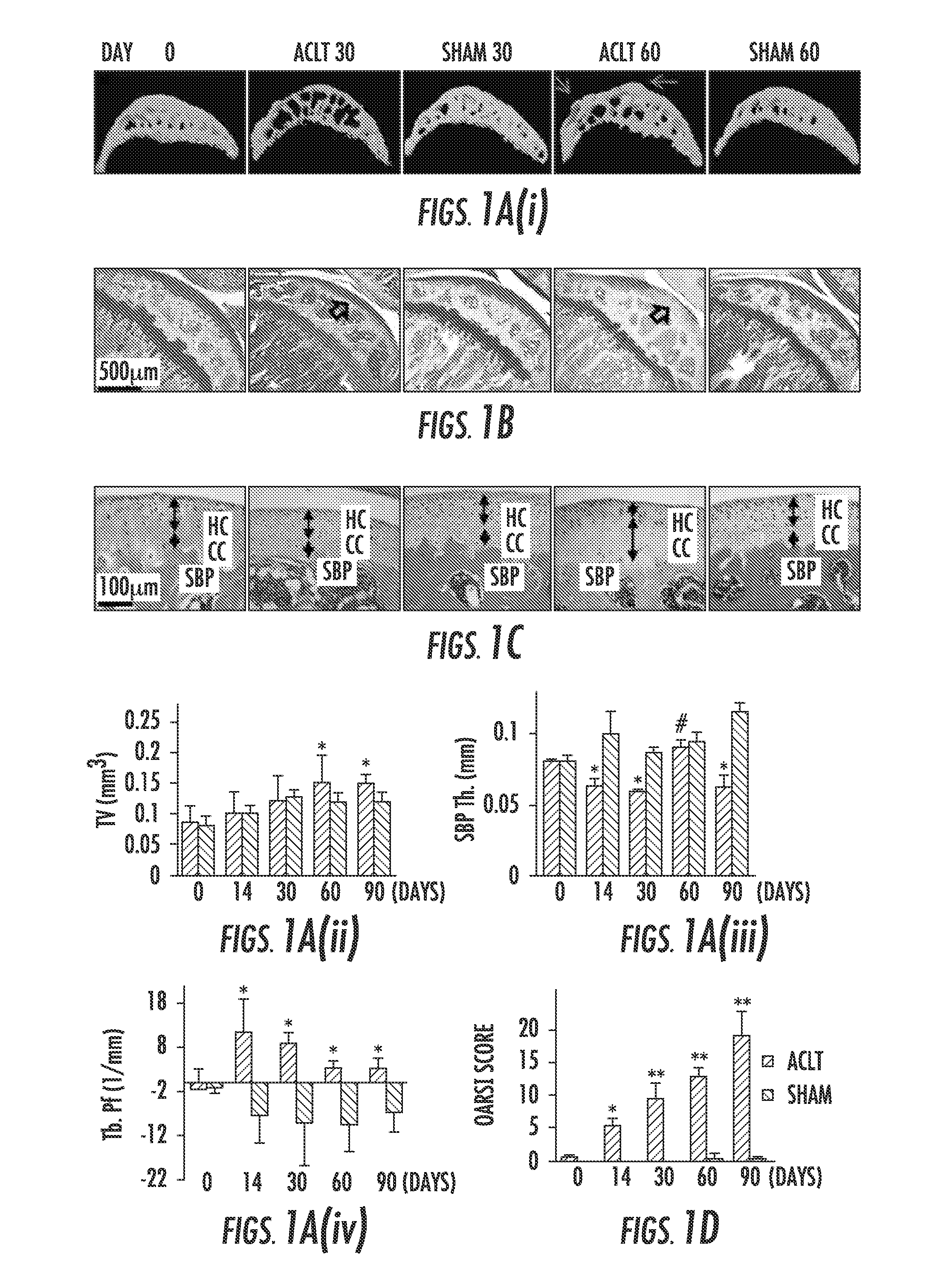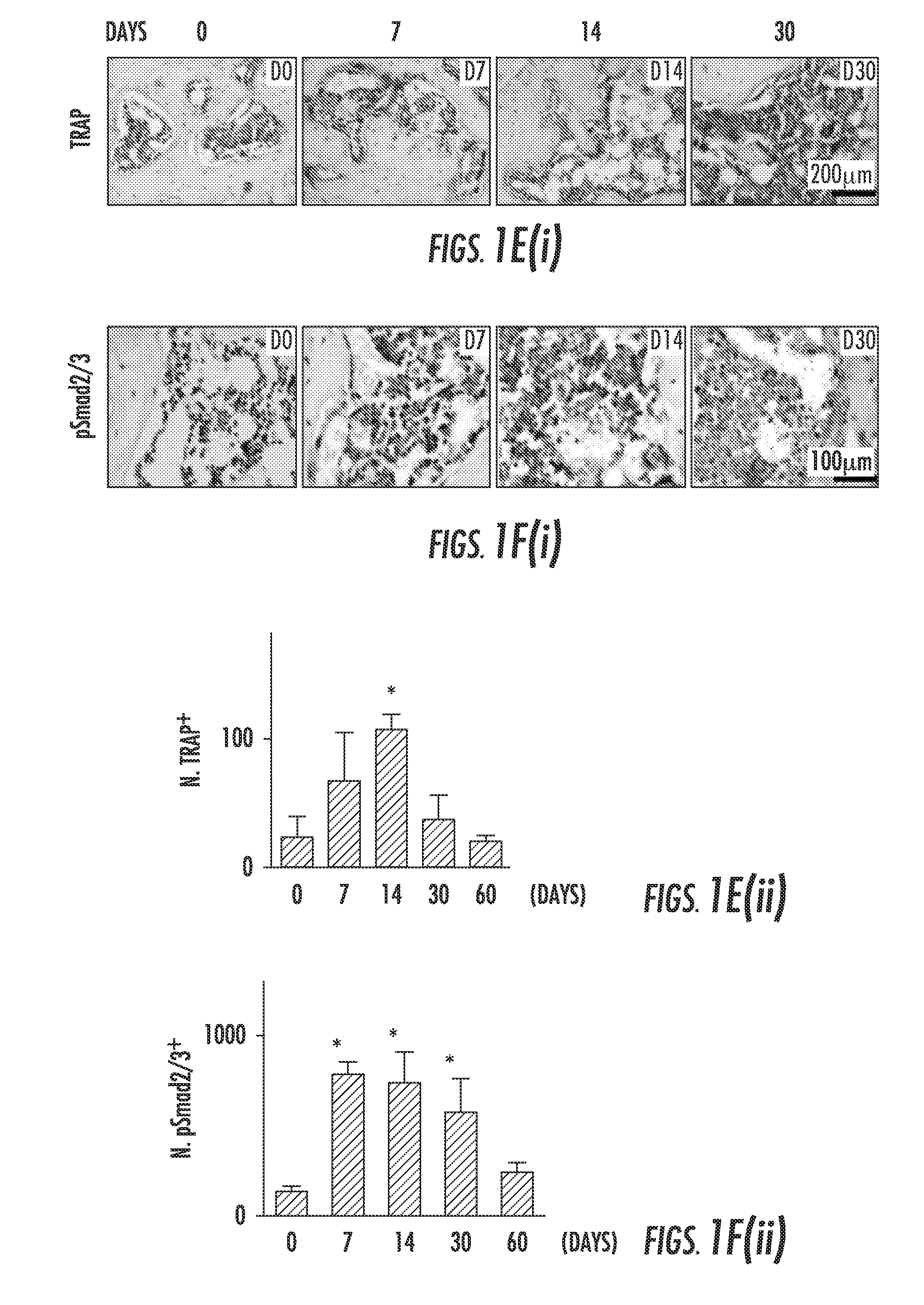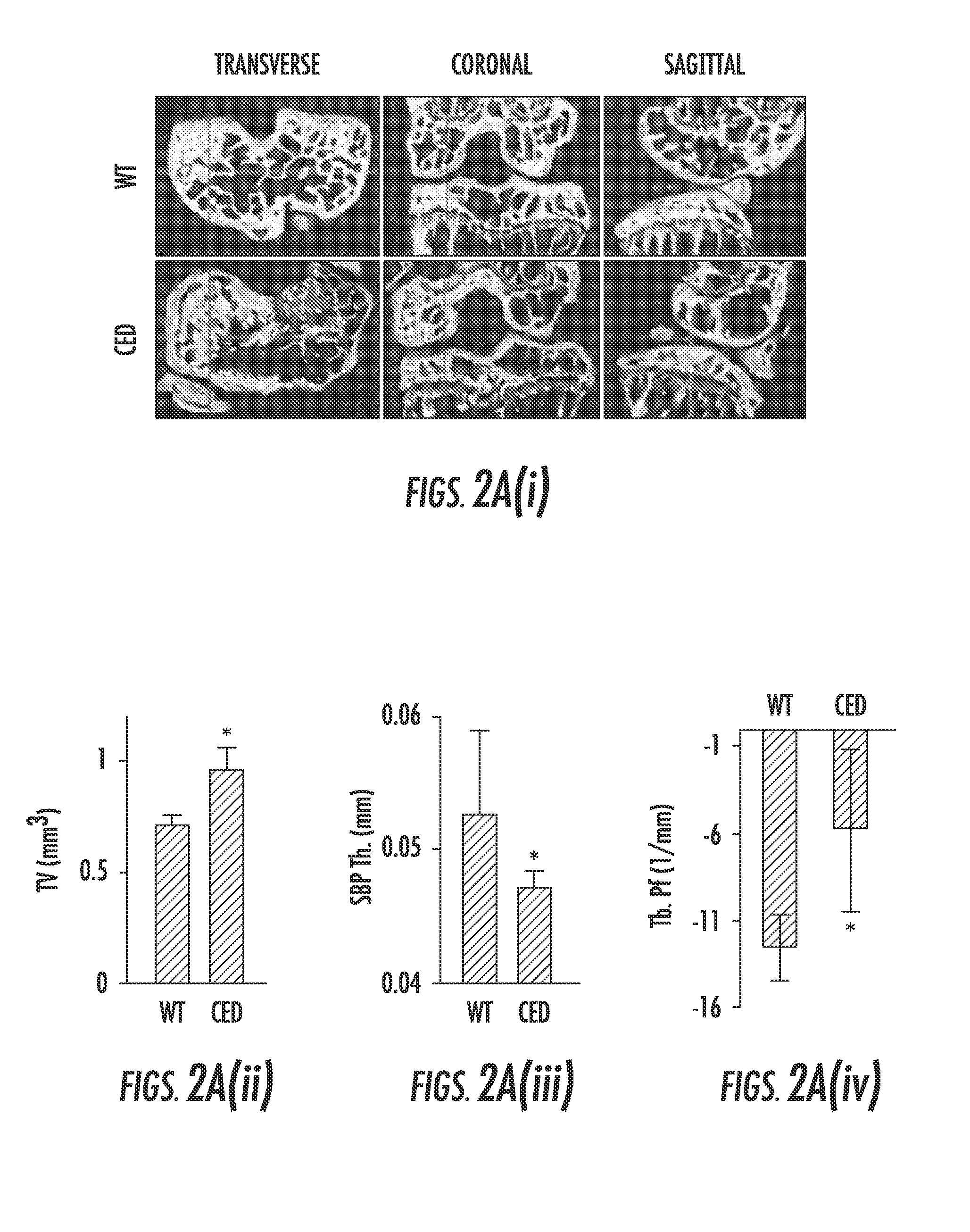Compositions and methods for treating or preventing osteoarthritis
a technology of articular cartilage and composition, applied in the field of osteoarthritis, can solve problems such as ineffective disease-modifying treatment, and achieve the effect of treating or preventing osteoarthritis and reducing the degeneration of articular cartilag
- Summary
- Abstract
- Description
- Claims
- Application Information
AI Technical Summary
Benefits of technology
Problems solved by technology
Method used
Image
Examples
example 1
Elevated Active TGF-β and Bone Resorption in Subchondral Bone
[0085]To examine the subchondral bone changes at the onset of osteoarthritis, we transected the ACL in mice to generate a destabilized osteoarthritis animal model and analyzed the effects over time. The tibial subchondral bone volume in ACLT mice dramatically changed relative to sham operated controls post-surgery in three-dimensional μCT analysis (FIG. 1a (top)). The total subchondral bone tissue volume (TV) increased by more than 20% compared to that of sham controls by 2 months post-surgery (FIG. 1b). The thickness of subchondral bone plate (SBP) fluctuated significantly from 14 to 60 days post-surgery with abnormal morphology by 60 days (FIG. 1c). Moreover, the disruption of connectivity and micro-architecture of trabecular bone was indicated by significantly increased trabecular pattern factor (Tb. Pf) in the ACLT mice compared to that of sham operated controls (FIG. 1d), indicating uncoupled bone remodeling. Proteogl...
example 2
Expression of Active TGF-β1 in Bone Induces Osteoarthritis
[0086]In Camurati-Engelmann disease (CED), TGF-β1 is activated upon secretion due to a point activating mutation in the TGFβ1 gene, and interestingly, people with CED are prone to develop osteoarthritis. To examine whether high concentrations of active TGF-β1 in the subchondral bone initiates osteoarthritis, we used a CED activation mutation mouse model in which TGF-β1 is activated upon secretion in the subchondral bone marrow by osteoblastic cells. Three-dimensional μCT images of cross sectional, coronal and sagittal views of tibial subchondral bone showed uneven distribution of bone mass in CED mice relative to their wild-type littermates, indicating disrupted bone formation (FIG. 2a). Similar to the ACLT mouse model, the tibial subchondral bone TV and Tb.Pf increased whereas thickness of the SEP decreased in CED mice relative to their wild-type littermates. Notably, significant proteoglycan loss was detected at the calcifi...
example 3
Subchondral Bone TGF-β Inhibition Attenuates Cartilage Degeneration
[0088]We next examined the effects of inhibition of TGF-β activity on ACLT joints. Injection of TβRI inhibitor (SB505124) has been shown to rescue uncoupled bone formation induced by high concentrations of active TGF-β1. We screened different doses of the TβRI inhibitor with ACLT mice to identify the optimal dose (FIG. 9). Low concentrations of TβRI inhibitor (0.1 or 0.5 mg kg−1) had minimal effects on the subchondral bone, whereas higher concentrations, beginning at 1 mg kg−1 improved subchondral bone structure (FIG. 3a). On the contrary, proteoglycan loss in articular cartilage was induced at higher concentrations (2.5 or 5 mg kg−1) (FIG. 9a). Of note, proteoglycan loss induced by higher doses of inhibitor was primarily observed in the superficial to middle zones of articular cartilage (FIG. 9a). Improvement of trabeculae connectivity and micro-architecture with 1 mg kg−1 of the TβRI inhibitor was demonstrated by n...
PUM
| Property | Measurement | Unit |
|---|---|---|
| thickness | aaaaa | aaaaa |
| thickness | aaaaa | aaaaa |
| dissociation constant | aaaaa | aaaaa |
Abstract
Description
Claims
Application Information
 Login to View More
Login to View More - R&D
- Intellectual Property
- Life Sciences
- Materials
- Tech Scout
- Unparalleled Data Quality
- Higher Quality Content
- 60% Fewer Hallucinations
Browse by: Latest US Patents, China's latest patents, Technical Efficacy Thesaurus, Application Domain, Technology Topic, Popular Technical Reports.
© 2025 PatSnap. All rights reserved.Legal|Privacy policy|Modern Slavery Act Transparency Statement|Sitemap|About US| Contact US: help@patsnap.com



